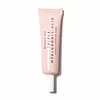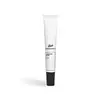What's inside
What's inside
 Key Ingredients
Key Ingredients

 Benefits
Benefits

 Concerns
Concerns

 Ingredients Side-by-side
Ingredients Side-by-side

Water
Skin ConditioningGlycerin
HumectantCaprylic/Capric Triglyceride
MaskingPropanediol
SolventDimethylsilanol Hyaluronate
HumectantC15-19 Alkane
SolventPropylene Glycol Laurate
Skin Conditioning1,2-Hexanediol
Skin ConditioningXylitylglucoside
HumectantAnhydroxylitol
HumectantAlbizia Julibrissin Bark Extract
MaskingButylene Glycol
HumectantXylitol
HumectantCarbomer
Emulsion StabilisingXanthan Gum
EmulsifyingPEG-240/Hdi Copolymer Bis-Decyltetradeceth-20 Ether
StabilisingEthylcellulose
Propylene Glycol Isostearate
Skin ConditioningEthylhexylglycerin
Skin ConditioningSodium Hyaluronate
HumectantCaffeine
Skin ConditioningMangifera Indica Seed Butter
Skin ConditioningSodium Hydroxide
BufferingPhenoxyethanol
PreservativeTetrasodium Glutamate Diacetate
Sodium Benzoate
MaskingDarutoside
Skin ConditioningPotassium Laurate
EmulsifyingTocopherol
AntioxidantWater, Glycerin, Caprylic/Capric Triglyceride, Propanediol, Dimethylsilanol Hyaluronate, C15-19 Alkane, Propylene Glycol Laurate, 1,2-Hexanediol, Xylitylglucoside, Anhydroxylitol, Albizia Julibrissin Bark Extract, Butylene Glycol, Xylitol, Carbomer, Xanthan Gum, PEG-240/Hdi Copolymer Bis-Decyltetradeceth-20 Ether, Ethylcellulose, Propylene Glycol Isostearate, Ethylhexylglycerin, Sodium Hyaluronate, Caffeine, Mangifera Indica Seed Butter, Sodium Hydroxide, Phenoxyethanol, Tetrasodium Glutamate Diacetate, Sodium Benzoate, Darutoside, Potassium Laurate, Tocopherol
Water
Skin ConditioningCaprylic/Capric Triglyceride
MaskingButylene Glycol
HumectantGlycerin
HumectantPEG-100 Stearate
Glyceryl Stearate
EmollientButyrospermum Parkii Butter
Skin ConditioningDimethicone
EmollientSiloxanetriol Alginate
Skin ConditioningCarbomer
Emulsion StabilisingPhenoxyethanol
PreservativeMethylparaben
PreservativeSodium Hydroxide
BufferingPotassium Cetyl Phosphate
EmulsifyingTocopheryl Acetate
AntioxidantEthylhexylglycerin
Skin ConditioningChlorphenesin
AntimicrobialXanthan Gum
EmulsifyingCaffeine
Skin ConditioningSodium Hyaluronate
HumectantDisodium EDTA
Sodium Methylparaben
PreservativeSorbic Acid
PreservativePropylparaben
PreservativeWater, Caprylic/Capric Triglyceride, Butylene Glycol, Glycerin, PEG-100 Stearate, Glyceryl Stearate, Butyrospermum Parkii Butter, Dimethicone, Siloxanetriol Alginate, Carbomer, Phenoxyethanol, Methylparaben, Sodium Hydroxide, Potassium Cetyl Phosphate, Tocopheryl Acetate, Ethylhexylglycerin, Chlorphenesin, Xanthan Gum, Caffeine, Sodium Hyaluronate, Disodium EDTA, Sodium Methylparaben, Sorbic Acid, Propylparaben
Ingredients Explained
These ingredients are found in both products.
Ingredients higher up in an ingredient list are typically present in a larger amount.
Butylene Glycol (or BG) is used within cosmetic products for a few different reasons:
Overall, Butylene Glycol is a safe and well-rounded ingredient that works well with other ingredients.
Though this ingredient works well with most skin types, some people with sensitive skin may experience a reaction such as allergic rashes, closed comedones, or itchiness.
Learn more about Butylene GlycolCaffeine is most associated with coffee, tea, and cacao. In skincare, it helps with calming inflammation and is rich in antioxidants.
While caffeine is used to treat cellulite and and dark circles, further studies are needed to prove this. It has been believed to help with these skin conditions due to its ability to dilate blood vessels and increase blood flow.
Some studies are looking into caffeine's ability to protect against UV rays.
Learn more about CaffeineThis ingredient is an emollient, solvent, and texture enhancer. It is considered a skin-softener by helping the skin prevent moisture loss.
It helps thicken a product's formula and makes it easier to spread by dissolving clumping compounds.
Caprylic Triglyceride is made by combining glycerin with coconut oil, forming a clear liquid.
While there is an assumption Caprylic Triglyceride can clog pores due to it being derived from coconut oil, there is no research supporting this.
Learn more about Caprylic/Capric TriglycerideCarbomer is a polymer of acrylic acid. Its main role is to create a gel consistency.
A high amount of carbomer can cause pilling or balling up of products. Don't worry, most products contain 1% or less of carbomer.
Ethylhexylglycerin (we can't pronounce this either) is commonly used as a preservative and skin softener. It is derived from glyceryl.
You might see Ethylhexylglycerin often paired with other preservatives such as phenoxyethanol. Ethylhexylglycerin has been found to increase the effectiveness of these other preservatives.
Glycerin is already naturally found in your skin. It helps moisturize and protect your skin.
A study from 2016 found glycerin to be more effective as a humectant than AHAs and hyaluronic acid.
As a humectant, it helps the skin stay hydrated by pulling moisture to your skin. The low molecular weight of glycerin allows it to pull moisture into the deeper layers of your skin.
Hydrated skin improves your skin barrier; Your skin barrier helps protect against irritants and bacteria.
Glycerin has also been found to have antimicrobial and antiviral properties. Due to these properties, glycerin is often used in wound and burn treatments.
In cosmetics, glycerin is usually derived from plants such as soybean or palm. However, it can also be sourced from animals, such as tallow or animal fat.
This ingredient is organic, colorless, odorless, and non-toxic.
Glycerin is the name for this ingredient in American English. British English uses Glycerol/Glycerine.
Learn more about GlycerinPhenoxyethanol is a preservative that has germicide, antimicrobial, and aromatic properties. Studies show that phenoxyethanol can prevent microbial growth. By itself, it has a scent that is similar to that of a rose.
It's often used in formulations along with Caprylyl Glycol to preserve the shelf life of products.
Sodium Hyaluronate is hyaluronic acid's salt form. It is commonly derived from the sodium salt of hyaluronic acid.
Like hyaluronic acid, it is great at holding water and acts as a humectant. This makes it a great skin hydrating ingredient.
Sodium Hyaluronate is naturally occurring in our bodies and is mostly found in eye fluid and joints.
These are some other common types of Hyaluronic Acid:
Learn more about Sodium HyaluronateSodium Hydroxide is also known as lye or caustic soda. It is used to adjust the pH of products; many ingredients require a specific pH to be effective.
In small amounts, sodium hydroxide is considered safe to use. However, large amounts may cause chemical burns due to its high alkaline.
Your skin has a natural pH and acid mantle. This acid mantle helps prevent harmful bacteria from breaking through. The acid mantle also helps keep your skin hydrated.
"Alkaline" refers to a high pH level. A low pH level would be considered acidic.
Learn more about Sodium HydroxideWater. It's the most common cosmetic ingredient of all. You'll usually see it at the top of ingredient lists, meaning that it makes up the largest part of the product.
So why is it so popular? Water most often acts as a solvent - this means that it helps dissolve other ingredients into the formulation.
You'll also recognize water as that liquid we all need to stay alive. If you see this, drink a glass of water. Stay hydrated!
Learn more about WaterXanthan gum is used as a stabilizer and thickener within cosmetic products. It helps give products a sticky, thick feeling - preventing them from being too runny.
On the technical side of things, xanthan gum is a polysaccharide - a combination consisting of multiple sugar molecules bonded together.
Xanthan gum is a pretty common and great ingredient. It is a natural, non-toxic, non-irritating ingredient that is also commonly used in food products.
Learn more about Xanthan Gum